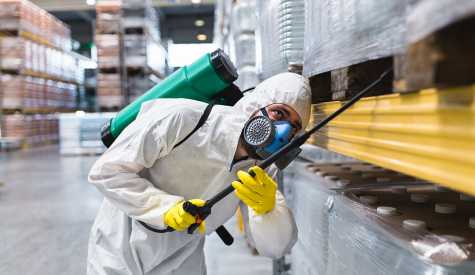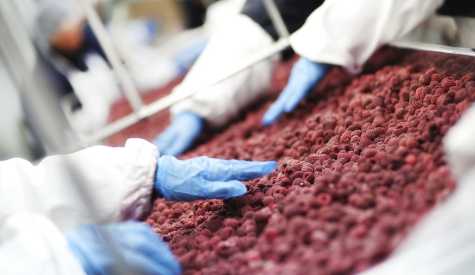Food Defense

According to the Centers for Disease Control and Prevention (CDC), one in six Americans get sick, 128,000 are hospitalized and 3,000 die from foodborne illnesses each year. Most accidental food contamination can be avoided by handling food safely, but food can be contaminated by mischief, industrial sabotage, or even terrorism, and can occur at any time during production. The Food and Drug Administration (FDA) uses the term “food defense” for procedures to protect against biological, chemical, physical and radiological contamination of food supplies. Many food defense procedures are specific to each facility, but there are some good general practices that everyone can follow.
Facility Security
Facilities should have fencing or some other boundary between the property and the surrounding community. Many also have security guards at entrances to facilities and parking lots to make sure only authorized people can come in. Employees should keep an eye out for any damage to security features such as:
- Gates
- Fences
- Cameras
- Entrances
- Doorways
- Windows
Employees should keep doors closed when not in use. If they find any damage or unattended open doors, employees should contact facility security immediately.
Restricted Areas
There are certain areas in every facility that not all personnel will have access to, such as chemical storage areas, offices, labs, and some food preparation and storage areas. Workers may have access to one or more of these areas if their duties require it, but may not be trained or authorized to work in other areas.
Many food storage areas contain ingredients that may contain allergens. Allergens can cause a major recall or serious health hazards to consumers if they get into foods they don’t belong in. Keep unauthorized ingredients, chemicals or personnel out of restricted areas.
Personnel Security
Many facilities issue their employees ID cards, keys, and/or door codes to get into the areas they work in.
Employees should keep their IDs and keys on them, and let security know if they lose a key or ID, or if someone else might know their door code. Employees should remain in their assigned areas, and wear whatever uniform their area requires. Visitors should never be left unattended anywhere in the facility, and contractors need to stay in their assigned areas of the facility.
Preventing Tampering
Product tampering is most often done by employees or vendors, either intentionally or by accident. Tampering may occur before raw materials arrive at a facility, during processing, or in holding areas before products ship out. Deliveries should arrive on schedule in a locked and sealed vehicle, and should match the type in amount on the paperwork.
Food products and ingredients can spend a lot of time in holding and storage areas before being prepared or delivered. Employees should check bags before they use them, and properly seal and mark them before putting them back. If employees notice signs of tampering, such as leaking containers, misspelled or improper labels, or open or discolored packaging, they should contact their supervisor or security personnel right away.
General Food Defense Practices (FIRST)
Many food defense procedures are facility-specific, but the FDA uses the acronym “FIRST” to help employees remember five general steps for food defense in any food production facility:
- F: Follow your company’s food defense plan and procedures
- I: Inspect your work area before, during and after your shift
- R: Recognize anything out of the ordinary
- S: Secure all ingredients, supplies and finished product
- T: Tell management if you notice anything unusual or suspicious
Conclusion
Everyone in the food supply chain has a role to play in food defense. Management, employees, vendors, and contractors are all responsible for keeping food safe.
For more information on the FDA’s food defense guidelines and practices, click here: https://www.fda.gov/food/fooddefense/
This blog is part of a food manufacturing safety series. For more topics, visit the blogs below:
Listeria Control in Food ManufacturingFloor and Drain Cleaning in Food ManufacturingForeign Material Control in Food ManufacturingCleaning and Sanitizing in Food ManufacturingSalmonella Control in Food ManufacturingHow Are Food Manufacturing Workers Protected From Chemical Exposure?Current Good Manufacturing Practices in Food ProductionHow do Food Manufacturers Use Hazard Analysis and Critical Control Point (HACCP) Plans to Protect Consumers?12 Ways Food Manufacturers Protect Consumers Who Suffer From Food AllergiesProper Hand Hygiene and Handwashing in Food Manufacturing

